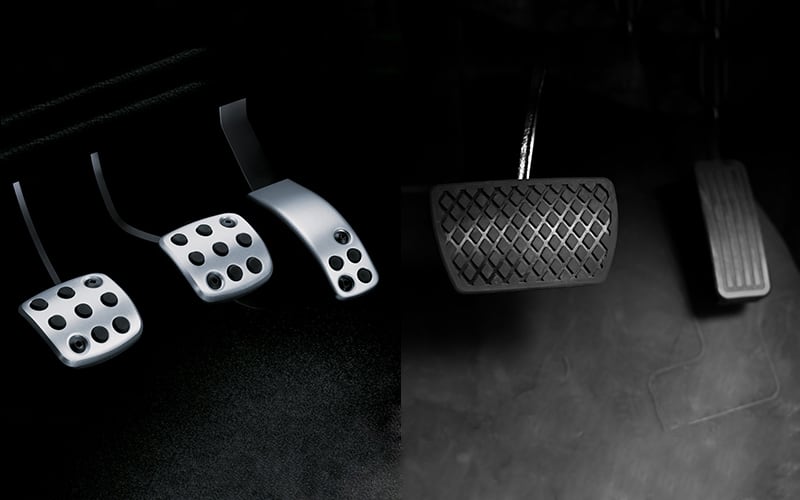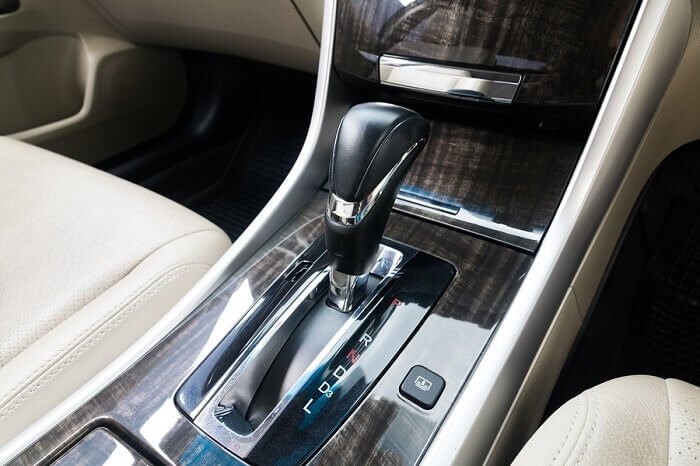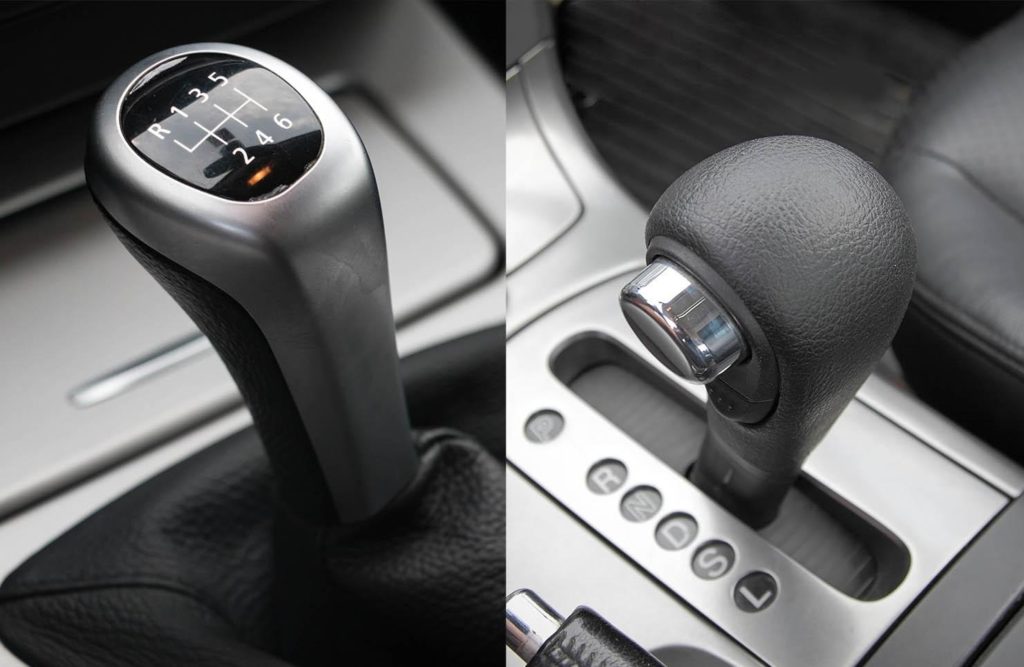By Kevin Horgan
Everyone argues for their favorite cars, from Ferraris to sedan cars, but one of the most intense debates in the automobile industry is the use of automatic and manual transmissions. Walk into any room with automobile enthusiasts, throw the questions, then watch and listen to the variety of arguments; often influenced by preferences that will be presented.
The peculiarities of manual and automatic cars are often considered in making choices such as car renting, car buying, and even learning. If you want to drive or learn in any part of the world, you often are faced with this choice, and in some places, stipulations are made regulating a person’s capability to drive any of the two models.
This guide will discuss the components of both types of automobiles, and while this might influence your choices when you want to buy a car, it is comprehensive enough to help you make decisions about your driving lessons. If you are in Ireland, for instance, it could make you consider car hire for driving tests in Dublin, or even go decide to take automatic driving lessons from nation driving school. An important thing to remember though when you are buying a car is to make sure that you have the right insurance for it. There are so many different types of insurance out there that it can sometimes seem a bit overwhelming, however, to make things easier for you, you can just get the right insurance based on your car make. For example, if you have a toyota 86, then you should get toyota 86 insurance.

The fundamental difference in both types of cars is the format in which the generated power is directed to the vehicle’s drive wheels. In simpler words, the difference is determined by gear shifting that the driver has to do, which is done by the car through an automated process in an automatic car. Since generating power and transferring it to the wheels of the vehicle is essential to propel a car, shifting is necessary for your car’s operation.
The transmission of the power is done through a gearbox, a metal case that is filled with oil and other components like gears, shafts, bearings amongst comprise others. While automatic cars have to be controlled by buttons; to direct the movement of the car using four modes which are often D for drive, N for neutral, R for reverse and P for park, manual cars have gears used to regulate the movement of the car wheels, and numbers indicate the ratio.
The transmission has to be regulated by speed and the conditions of the road. An automatic car creates the needed balance between the movement of the engine and the wheels by an automated process, leaving the driver with the task of moving specific choices alone. On the other side, a driver of a manual vehicle has to make every single decision.
Automatic Cars
An automatic car uses a torque converter to automatically adjust gear ratios to easily and smoothly transition to a state suitable for the pace and conditions of the road. It is also known as self-shifting transition, or simply as auto or automatic, and is based upon a hydraulic automatic transmission. There are other types, such as the continuously variable transmission and semi-automatic transmissions, but the most common automatic cars at the moment are the traditional hydraulic transmissions. An automatic car hydraulic transmission contains a converter, planetary gears train, and hydraulic controls.

Here are the features of automatic cars:
Easy to Drive
An automatic car is easy to drive since the driver is free from having to concentrate on changing gears. The car operates without the need to focus on a clutch. An automatic car is, therefore, more convenient, comfortable, and easy to drive. For those who have to engage in some other activities while driving, such as watching kids in the car, receiving and making calls (only a hands-free device is acceptable), grabbing a snack or anything, an automatic car is an ideal bet. A manual car would not guarantee such advantages as the maximum concentration is often used to navigate it.
More Comfortable
An automatic car makes traveling more comfortable, as there are hardly any of those bumps a manual car does when a wrong gear decision is made. The smooth transitions facilitated by the automatic transmissions guarantee a seamless, frictionless ride.
Better Navigation
If you have lived in less busy places, and residing in a new city presents more congested traffic to you, automatic cars are often the best choice. If your journey from home to work is about 15 minutes, and there is the need to make many stops on the way, automatic cars reduce the stress and energy to be expended during such stops. Although having great command over such cars, we always recommend having good driving lessons from any great driving schools.
When it comes to the ease to drive and pace of learning, automated cars are the best pick.
Automatic cars are often more expensive; both to buy and maintain and are generally known to consume a lot of fuel though that is now changing through the advent of fuel-efficient automatic cars. If you’re thinking of buying an automatic or a manual car, visit a used car auction to find the car of your dreams at a reasonable price.
Manual Cars
The other type of vehicle other than an automatic car. A manual car has a manual transmission, also known as a manual gearbox. The first and most common type of car, the manual transition was the traditional model and is known as standard transmission. Manual cars are one in which a shift, or stick, is used to shift gears and a third pedal to operate a clutch. The gears are driver operated, and unlike an automatic car in which the gear is adjusted by some functionalities of the vehicle, a driver has to make all the decisions on some stick shift with indicators.

The first type of manual transmissions were three-speed manual transitions. Over time, advancement in technology and sciences led to improvements, leading to the much faster and efficient four-speed manual transmissions cars. Now, there are five, six, and seven gears, all evidence of advancement in automobile engineering. At present, the most common manual transmission vehicles are five-speed manual transmissions. A manual car usually features a clutch operated by the driver and a gear; used by the driver to select the gear ratio, and there are gears that enable a driver to only select the higher level, or the gear ratio just below, known as a sequential manual transmission.
A manual car has certain features which include:
Less Fuel Consumption
Manual cars have many benefits too. The absence of a hydraulic pump makes a manual car consume way less fuel; though the presence of locking torque converters has reduced the disparity in the level of fuel consumption between automatic and manual transmission vehicles. Generally, however, manual transmission vehicles consume less fuel and offer great fuel economy. The use of fewer compartments in manual cars also enhances its fuel economy.
More Control
Manual cars also enable drivers to have more control over the car. Manual cars remain commonplace in sports contests because of the flexibility and control over the operation of the car.
Durable
Manual cars generally last longer. The mechanisms of a manual car are not as intricate as an automatic car; they have fewer moving components and can be manufactured easily. Furthermore, they require less maintenance and are cheaper to repair.
Strong
Vehicles with manual transmissions are better equipped in the event of unfavorable conditions, such as being stuck in mud or snow. Manual cars can also be push-started when the battery is extremely low.
Manual cars could be unpopular with some drivers for certain reasons. First, it is harder to learn how to drive a manual car than an automatic car. An inexperienced driver will have issues with locating the clutch while focusing on the road. Technical faults could develop when a driver selects the wrong gear levels as it requires the car to react, damaging components in the process. Worse, a driver could lose control of the vehicle with the wrong decision.
Manual Cars do not enable disabled people to use them. It also requires a lot of reflexes, many hand movements and the use of both feet. It is difficult to drive a manual transmission vehicle without concentration and total focus. So, people who are disabled cannot drive manual cars, especially if it is a limb deformity
Conclusion
The choice between manual and automatic cars boils down to personal preferences. While someone might love manual transmission vehicles for all the control it offers the driver, others may simply like the ease in driving, and the easier learning that automatic transmission vehicles offer. Though manual cars can be difficult to drive, effective training can help anyone fully understand the technicalities of a manual car, and drive an automatic car with confidence. There are areas in which someone who has an automatic license cannot drive a manual car, except if he upgrades his learning. Whether you want to start driving anew or upgrade your skills, you would benefit by exploring an Essential Driver Training Lesson in Dublin. You will be amazed at control upon your car afterward.



